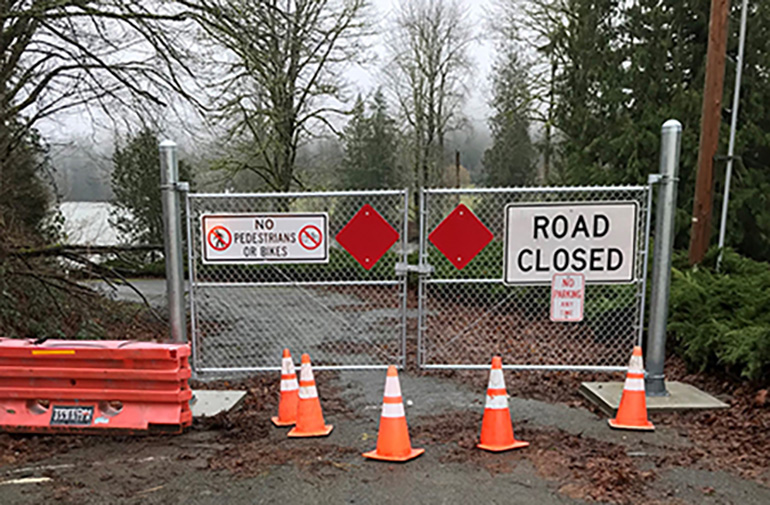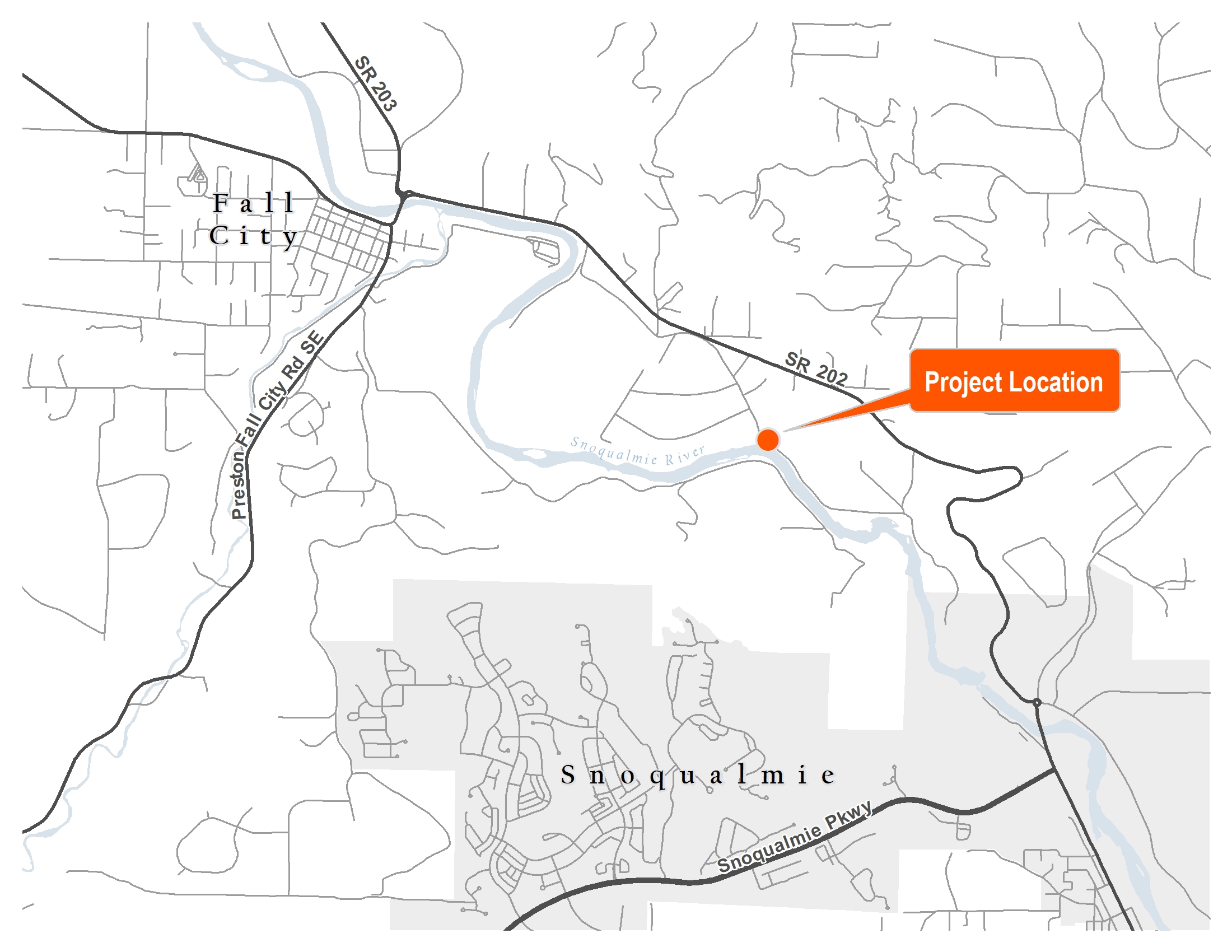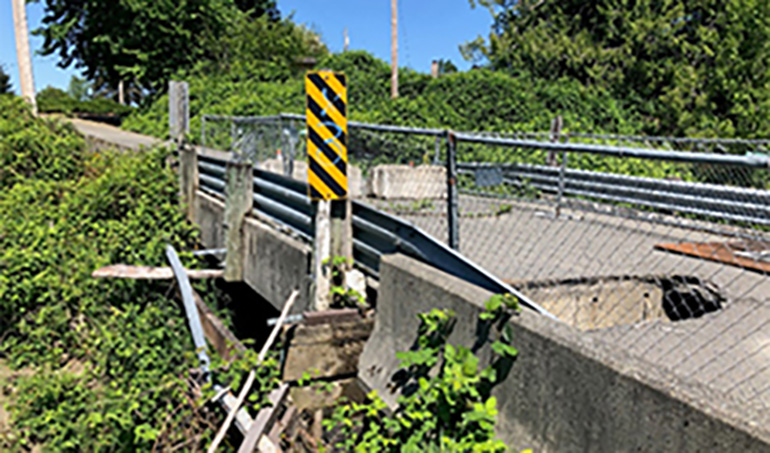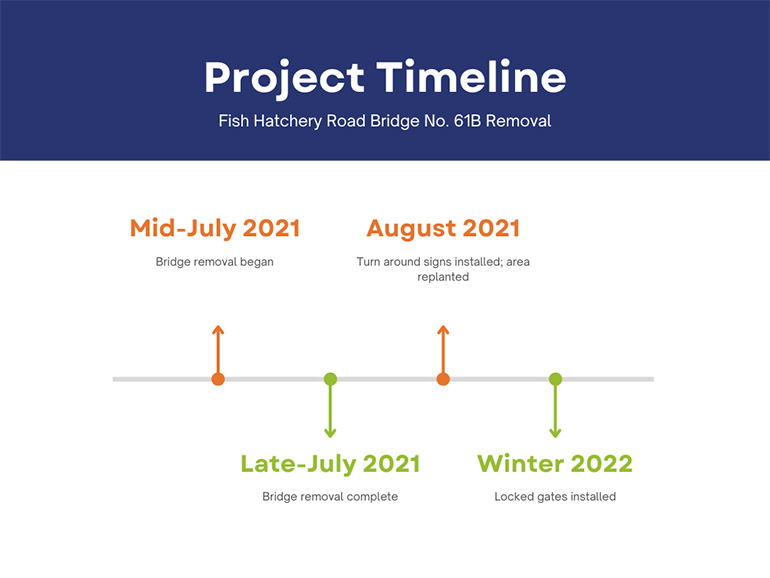Fish Hatchery Road Bridge No. 61B Removal

Overview
The 20-foot-long, timber-supported Fish Hatchery Bridge was originally built in 1950. King County had repaired the bridge several times, and permanently closed it to vehicle traffic in 2018 due to severe flood damage. Flood events in 2019 and 2020 had continued to damage the bridge and Fish Hatchery Road further.
In response to community and project-partner feedback, the County permanently removed the damaged bridge in July 2021 and installed locked gates to protect the public in Winter 2022.
The bridge removal did not impact parking or how people currently access the area for recreation. The bridge support piles and roadway abutments remain in place, however, in case they are used in the future for habitat restoration or other use.
Frequently asked questions

 Translate
Translate


